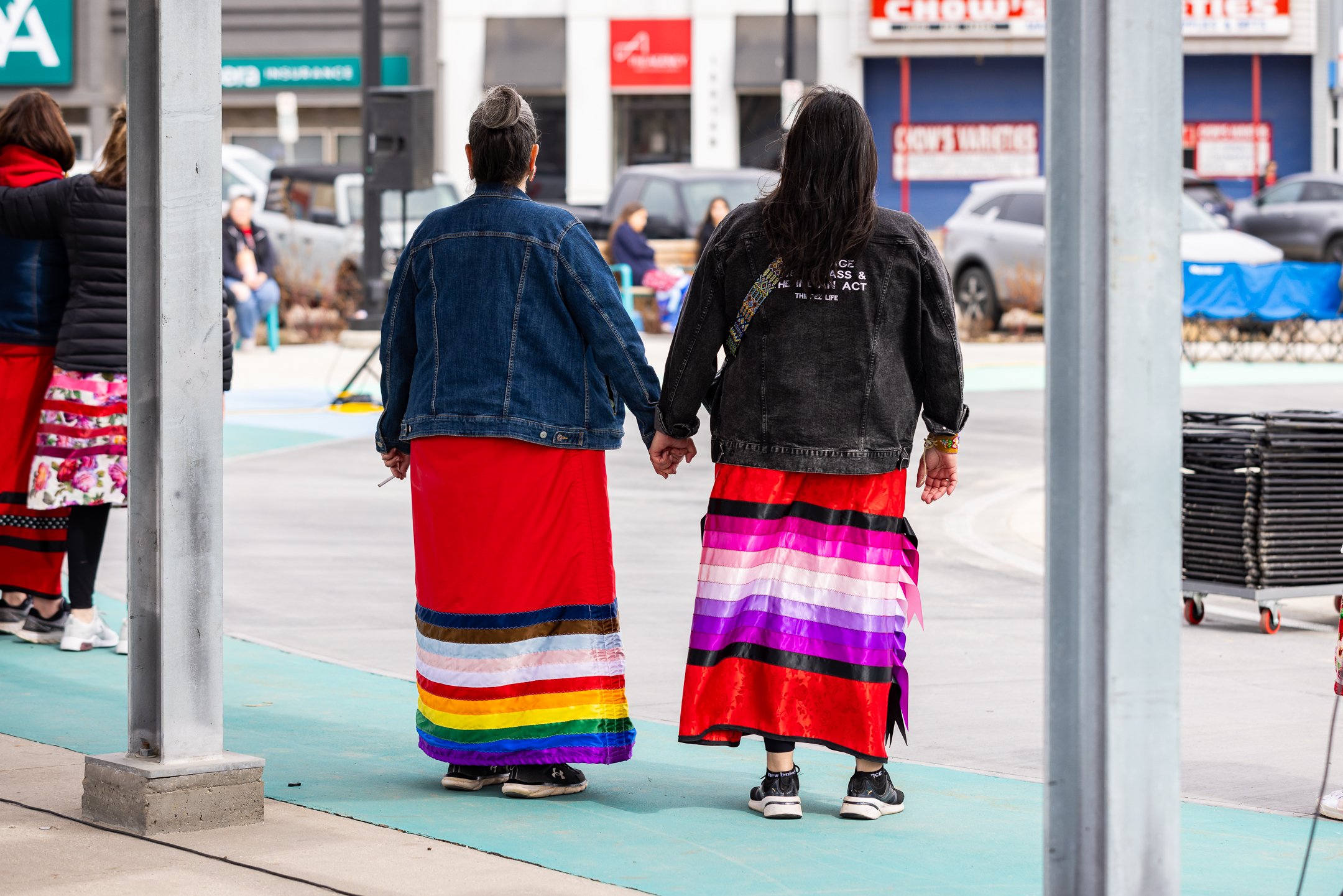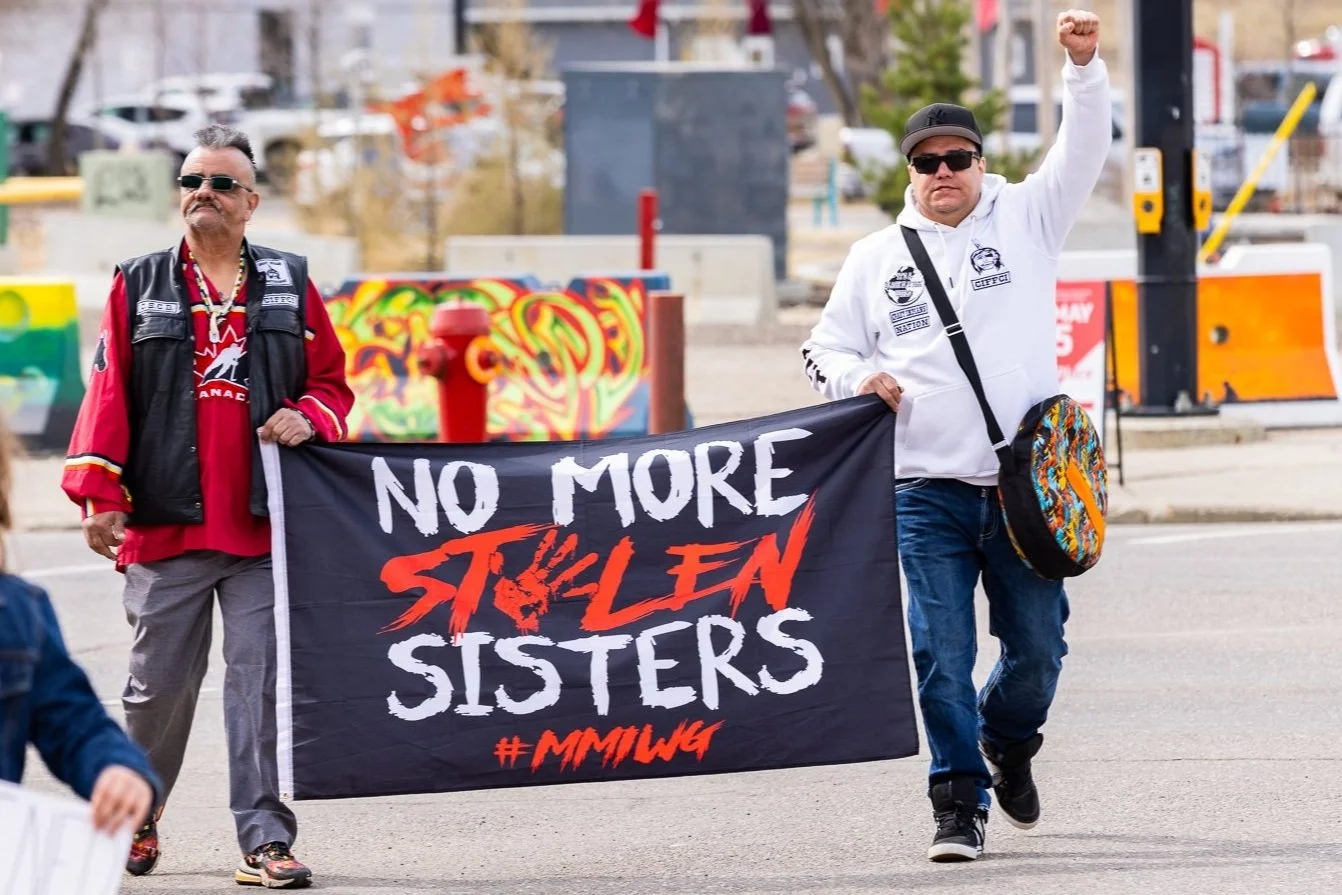
Awareness
Generations of oppression, racism, and cultural and physical genocide have made Indigenous people the targets of acts of violence. Every Indigenous community has been impacted by Missing, Murdered or Exploited loved ones. We all have a responsibility to support the safety of Indigenous people and to help those who are targeted.
We honour and remember the Missing and Murdered loved ones identified by Indigenous families and communities within the region of Wood Buffalo in Treaty 8 territory. As awareness around MMEIP continues to grow within our home territory, we know more names will be brought forward.
Add an MMEIP Loved One to the Database
The Wood Buffalo MMEIP Database is a community-led initiative, driven by the need for change. Each Indigenous person identified in the database is a member of an Indigenous community in the region, or is an Indigenous person who was last seen in the Wood Buffalo area. We respect and honour the wishes of the families. Information added to the database is kept confidential unless consent is given to the MMEIP Taskforce to tell their story.
Upcoming Events and Awareness Days
What is MMIWG2S+
Indigenous women, girls and two-spirit+ people disproportionately experience violence, or go missing or are murdered, compared to non-Indigenous people. The reverberating impacts of colonization such as the devaluing of Indigenous matriarchal systems and imposed gender conformity continues to perpetuate the national epidemic. It has been labeled a national tragedy and a national shame that requires immediate and sustained awareness and action.
Read the 2019 National Inquiry into Missing and Murdered Indigenous Women and Girls here.
Indigenous women are twice as likely to experience violence from their current or former partner. A little more than 13% of Indigenous people experience violence from their current or ex-partner, a proportion twice as high as non-Indigenous people (5.7%) (AFN, 2024).
Indigenous women are more likely to experience physical and sexual assault than non-Indigenous women. 56% of Indigenous women have suffered physical assault, and 46% have experienced sexual assault. By comparison, about one-third of non-Indigenous women have suffered these assaults in their lifetimes (AFN, 2024).
The exact number of Indigenous women who have been murdered or are missing in Canada is unknown, however, it is estimated to be over 4000* women with half of the murder cases remaining unsolved. Indigenous women are six times more likely to be murdered than non-Indigenous women in Canada. They make up 25% of national female homicide victims, despite representing only 4% of the population. Not only is the prevalence of murdered Indigenous women disproportionately high, the rate of charges against the perpetrators in these crimes is about 30% lower than it is for non-Indigenous victims (Statistics Canada, 2021).
What is MMEIP
Missing, Murdered & Exploited Indigenous Peoples is an inclusive term referring to the human rights crisis impacting Indigenous peoples who are alarmingly over-represented in cases of violence and exploitation. The term ensures the representation of men and boys so that all Indigenous peoples are included in the movement. Forced removal from lands, cultures, and languages, compounded by the ongoing impacts of colonization, has created a vulnerable narrative that has contributed to the targeting of Indigenous Peoples overall.
Indigenous peoples are six times more likely to be murdered than non-Indigenous people and represent 25% of national homicide victims despite accounting for lower than 5% of the population (Statistics Canada, 2021).
It should be noted that these statistics are estimates only. Prior to 2014, police-reported information did not record Indigenous identity in homicide victims. The numbers are much higher. Each of these victims has a name, a story and people who love them.










